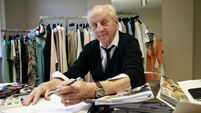Irish designer Jonathan Anderson's Paris Fashion Week collection shows he is the one Dior needs
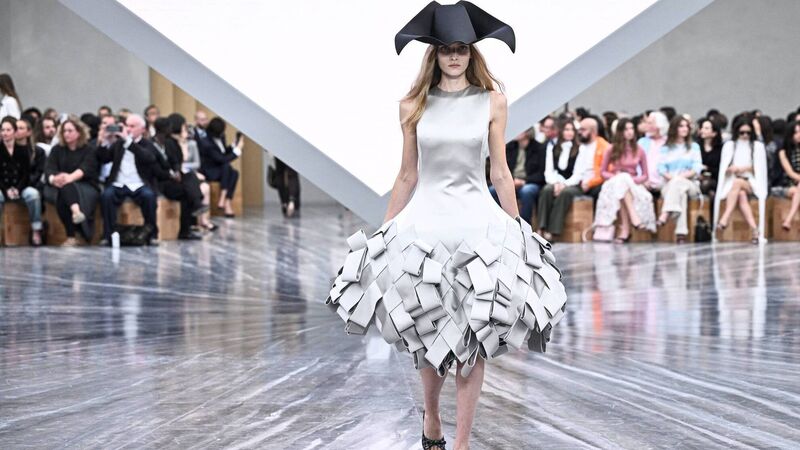
A model presents a creation by Dior for the Women Ready-to-wear Spring-Summer 2026 collection at Paris Fashion Week. Photo: Julien De Rosa/AFP via Getty Images
History repeated itself at Jonathan Anderson’s first womenswear show for Dior during Paris Fashion Week on Wednesday afternoon. Sort of.
The Northern Irish designer continued to probe the past to provide answers as to how women might dress in 2026 and beyond by recontextualising the Dior archives.
The house, originally founded in 1946, has witnessed many iterations. It was highlighted in a short documentary of archive footage that premiered before the show, which was held in a purpose-built box in the Jardin des Tuileries.
Celebrities like Jennifer Lawrence, Mikey Madison, and Rosamund Pike cooed from their front row perch as haute couture-inspired dresses like duchesse satin dresses with a skirt of interlocking ribbons, slick tailored jackets styled with draped blouses or washed denim shirts and mini skirts, all topped with tricorn hats, made exits.
On the runway, Mr Anderson’s historical reinvention featured new takes on Dior signatures like the Bar jacket, a tailored blazer with an hourglass silhouette, or the Delft skirt, a voluminous skirt with protruding multi-pleats. He propelled them into the present day.
Donegal tweed Bar jackets are cropped, bedazzled, or deconstructed with slashed vents. The Delft was re-imagined as Bermuda shorts, which first appeared on the men’s runway in June, tailored shorts and floral print skirts.
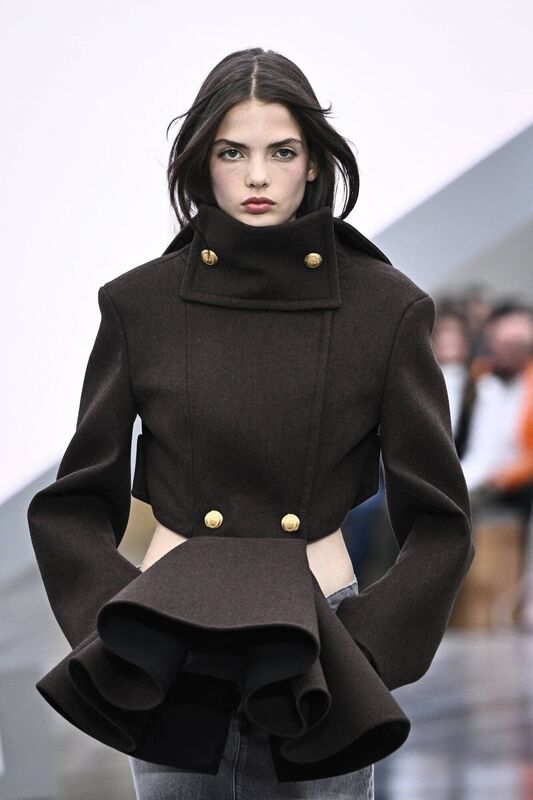
The designer played to the idiosyncrasies of the everyday wardrobe of various ages and social demographics, giving them a decadent, almost fairytale flourish.
A buffet of ideas: washed denim shirts boast 19th-century collars and ruffles; capes are draped over pussy-bow blouses and humble straight-leg jeans; wide-leg trousers feature architectural twisted pleat hemlines; the silhouette of a man’s shirt is turned into a singlet.
Mr Anderson’s archival inquiry was full of intrigue and an invigoration, or as the show notes suggested, “a sugar rush”. He rendered Dior’s anew, giving one of fashion’s biggest brands a modern verve without losing sight of its distinct heritage.
Backstage, he said: “Change is inevitable.”
His case for dressing in response to a historical through-line, connecting the dots between the past, present and future, is a compelling one. By looking at how trends come and go, how our attitudes towards clothing change with time and change again, the designer arrived at an aesthetic hotchpotch.
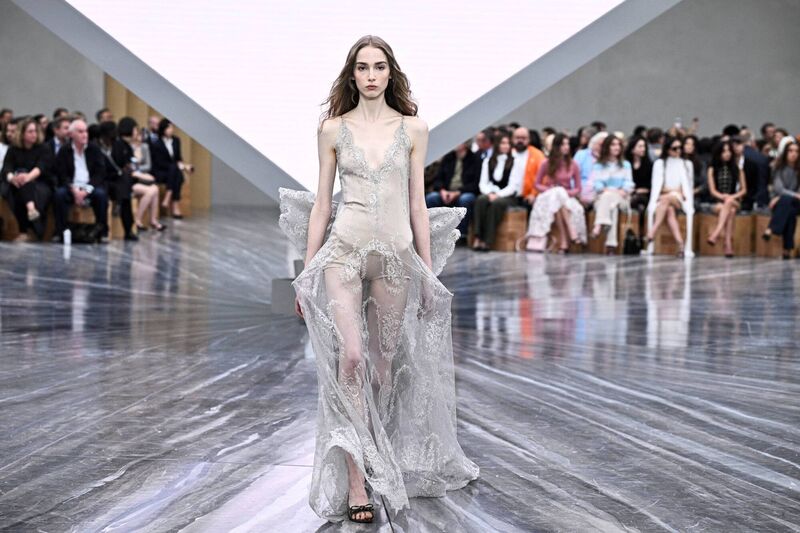
His skill as a designer is how he effectively coalesces different eras in a single look without it ever becoming anachronistic.
Earlier this year, Mr Anderson became the first designer since the eponymous founder to design women’s, men’s, haute couture and accessories at Dior, where revenues quadrupled between 2017 and 2023 to €9.5bn.
Mr Anderson’s debut took place during the spring/summer 2026 men’s fashion shows during Paris Fashion Week in June. The opening act re-imagined women’s haute couture shapes from the 1950s for men today, married Mr Anderson’s casual sensibilities with Dior’s tailoring prowess and featured a €250,000 embellished coat.
The son of former international rugby player Willie Anderson, the designer appeared at the end of Wednesday’s runway show to a standing ovation wearing a navy crew-neck sweater over a white t-shirt, blue jeans and Salomon trainers. The simplicity of his outfit belies an enormous talent, creative ambition, and boundless imagination.
Mr Anderson has a unique understanding of how to predict the needs of luxury consumers, pointing them in mostly new directions each season. He seamlessly invokes historical dress, imbuing it with contemporaneity, and routinely interrogates silhouettes. He is an oracle of fashion. He’s the one Dior needs.
His arrival to Dior comes as the luxury fashion industry faces a significant slowdown over the last 12 months, arising from slowing demand, economic headwinds, and shifting consumer tastes, impacting the most resilient companies, including Dior's parent company LVMH. Luxury conglomerate revenues have taken a hit, outlooks have dampened.
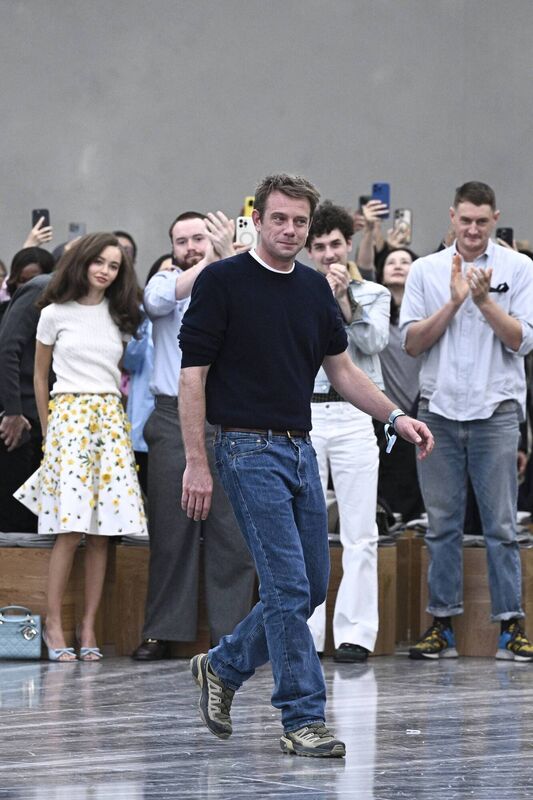
It has signalled a creative reshuffle and aesthetic overhaul at some of the world’s leading brands, making the spring/summer 2026 a blank slate. Across fashion weeks in Milan and Paris, there are 15 designer debuts.
In recent months, Gucci, Versace, Balenciaga and Loewe, where Mr Anderson previously held the mantle for almost 12 years, have introduced new creative heads. The designers are tasked with revitalising the language of the brands to satisfy the needs of ever-evolving customer tastes.
At each house, designers must grapple with a suite of existential questions around heritage, craft and identity. What should a luxury brand stand for today? The answer isn’t always clear.
The fashion industry’s creative shake-up culminates on Monday night, on the penultimate day of Paris Fashion Week, with Matthieu Blazy’s first collection for Chanel.
The Belgian designer previously served in behind-the-scenes roles at Celine and Calvin Klein before assuming the mantle at Bottega Veneta, where he stimulated success at the house with a craftsmanship-led approach. He is charged with breathing new life into the house, which posted $18.7bn in revenues in 2024, whose history is entangled in bouclé suits, quilted leather handbags and perfume.





